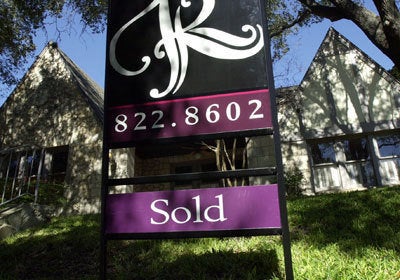

They are everywhere in all the magazines: "Green" modern prefabs. But are they really green?
It is greener by design
Perhaps the greenest thing about prefab is the design process. The conventional model of the architectural business is dead when it comes to housing -- only the very rich can afford to hire architects to build one-off houses. Architects, like anyone else, don't always get it right; Frank Lloyd Wright once said, "A doctor can bury his mistakes, but an architect can only advise his clients to plant vines ... " unlike industrial designers, architects don't usually get to make prototypes -- they usually design each house from scratch. The greenest thing about prefab is the fact that they get to do it over again -- you can bet that every Glidehouse turned out by Michelle Kaufmann is a little better than the previous one, a little tighter on the planning, using a bit less material and energy to build, a little more refined.
It is greener in construction
As much as 30% of construction materials are wasted through theft, water damage or just leftovers tossed in the dumpster. In a factory nothing is stolen or thrown out, even the sawdust is burned for heating. On conventional sites, a lot of workers drive considerable distances to get to the job site, often in big honking pickup trucks; in a well-run prefab factory employees use about a quarter as much fuel, because of the reduced man-hours needed to build a house, and the reduced distance they drive to get there. (Prefab plants are usually in smaller towns with a stable workforce). This is offset slightly by the cost of heating the plant and the big trucks and cranes necessary for delivery, but it still comes out way ahead, even if it is built out of identical materials.
However it ultimately is only as green as the developer and builder. Michelle Kaufmann, Jennifer Siegel, Leo Marmol, Steve Glenn and Andy Thomson know where their materials come from, how far they have travelled, to what tolerances they are installed. You can call any of them up and buy their green and elegant designs now at a quoted price. Try that with conventional construction.
It is greener in operation
You get better quality of work out of someone working with great tools in comfortable working conditions inside than someone standing in the snow or the blazing heat. You also get better inspections to ensure the work is done properly. Consequently prefabs are generally more airtight and well insulated than conventionally built houses. You also can spread the cost of engineering alternative energy systems over a number of units, reducing their cost to affordable levels and shortening the payback time.
But it is not necessarily cheaper.
While workers are more efficient inside, the overhead costs are far higher for a prefab builder with a roof and full-time employees -- most houses are built by independent subcontractors. The transport and crane costs are high, making small prefabs often more expensive than conventional construction. Most conventional construction is local, whereas prefabs can often travel a few hundred miles, making service and warranty costs higher.
Witold Rybczynski says "the current vogue for prefabs is more about industrial chic than affordability" and he is not wrong, but like everything else, the early adopters pay more for a less than perfect product; it takes a while for good design to make it to Target. But it eventually does, making good, green design more affordable and accessible to everyone.
More Prefabs
Small Lot Prefab From Resolution 4 : TreeHugger
Prefab : Green or Greewashing? : TreeHugger
Shipping Container Prefab : TreeHugger
BlueSkyMod Prefab Cabin : TreeHugger
Jenesys Flatpack Prefabs : TreeHugger
Marketing Design: Green Modern Prefab Meets Google : TreeHugger
mkSolaire: New Green PreFab from Michelle Kaufmann : TreeHugger
Witold Rybczynski on the Prefab Fad : TreeHugger
Sustain MiniHome : Sustainable Prefab Now. : TreeHugger